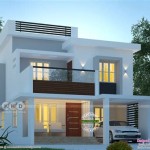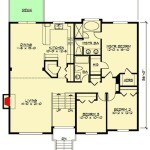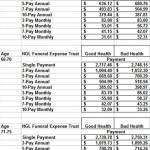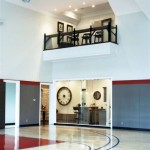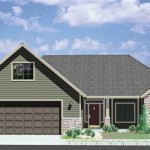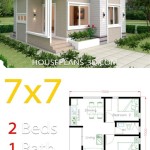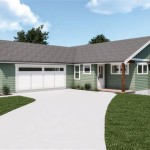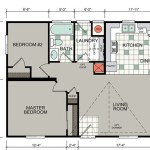Home Plans With Mother-In-Law Apartment: Design, Benefits, and Considerations
The concept of a "mother-in-law apartment," also known as an accessory dwelling unit (ADU), in-law suite, or granny flat, has gained significant traction in recent years. These self-contained living spaces, integrated within or adjacent to a primary residence, offer a diverse range of benefits, from accommodating aging parents to generating rental income and providing flexible living arrangements for various family members. This article explores the design considerations, advantages, and essential factors to consider when selecting home plans that incorporate a mother-in-law apartment.
Understanding the Purpose and Design of a Mother-In-Law Apartment
A mother-in-law apartment is typically designed as a miniature version of a full-sized home, offering independent living facilities for one or more individuals. At a minimum, it includes a private bathroom, a sleeping area (bedroom or studio layout), and a functional kitchen or kitchenette. The degree of separation and integration with the main house can vary based on the specific needs and preferences of the homeowner and the occupant. The layout and amenities within the apartment are tailored toward independent living, which is a key differentiator from a simple spare bedroom or guest suite.
Design considerations are paramount when planning a mother-in-law apartment. Accessibility is a crucial factor, especially if the intended occupant has mobility limitations. This might involve incorporating features such as wider doorways, ramp access rather than stairs, and grab bars in the bathroom. Soundproofing is another important element to consider, ensuring both privacy and reduced noise transmission between the main house and the apartment. The integration of natural light through windows and skylights can also significantly enhance the living experience within the apartment.
There are several ways to integrate a mother-in-law apartment into a home's design. Some common approaches include: * Attached ADU: integrated into the main structure of the house but with a separate entrance. These can be positioned on the ground floor, above a garage, or as an addition to the home's existing footprint. * Detached ADU: A separate building located on the same property as the main house. This option provides the greatest level of privacy and independence. * Basement Apartment: A conversion of a basement into a self-contained living space. This option can be cost-effective if the basement is already partially finished and has egress options. * Garage Conversion: Transforming an existing garage into a living space can be a relatively straightforward and affordable method.
The choice of integration method significantly impacts the overall design and functionality of both the main house and the mother-in-law apartment. Factors such as property size, local zoning regulations, and the homeowner's budget will influence the selection of the most suitable option.
Benefits of Incorporating a Mother-In-Law Apartment into Your Home
The inclusion of a mother-in-law apartment in a home design offers a multitude of advantages, appealing to diverse homeowner needs and circumstances. These benefits extend beyond simply providing accommodation for aging parents.
One of the primary advantages is the ability to provide housing for aging parents while maintaining a degree of independence for both parties. This arrangement allows seniors to live close to family, receiving support and companionship as needed, while still retaining their own private space and autonomy. It is a particularly valuable solution when dealing with elderly individuals who may experience declining health or require assistance with daily tasks. The stress and emotional burden associated with long-distance caregiving can be substantially reduced.
Beyond accommodating elderly relatives, a mother-in-law apartment offers flexible living arrangements for other family members. Adult children returning home from college, individuals going through transitions, or even long-term guests can benefit from the privacy and independence offered by a separate living space. This can alleviate overcrowding in the main house and provide a more comfortable and sustainable living arrangement for all involved.
Furthermore, a mother-in-law apartment can serve as a significant source of rental income. Depending on local market conditions and zoning regulations, homeowners can rent out the ADU to tenants, generating a steady stream of revenue to offset mortgage payments or other household expenses. This makes the addition of a ADU a potentially lucrative investment. The income potential can be particularly attractive in areas with high housing costs or limited rental availability.
Finally, adding an ADU can significantly increase a home's property value. The added living space and potential for rental income make the property more attractive to prospective buyers. While the exact increase in property value will vary depending on location and market conditions, the investment in a well-designed and functional mother-in-law apartment often yields a positive return in the long run.
Key Considerations Before Implementing Home Plans With a Mother-In-Law Apartment
While the benefits of a mother-in-law apartment are compelling, careful planning and consideration are essential before undertaking such a project. Several key factors must be addressed to ensure a successful and compliant implementation.
Zoning Regulations and Building Codes: Local zoning ordinances and building codes are paramount considerations. These regulations govern the permissible size, location, and design of ADUs. Some municipalities have specific restrictions on ADUs, while others actively encourage their development. It is crucial to thoroughly research and understand the applicable regulations before beginning any design or construction work. Failure to comply with zoning regulations can result in fines, legal action, or even the forced removal of the non-compliant structure.
Financial Planning and Budgeting: Adding a mother-in-law apartment involves a significant financial investment. The cost will vary greatly depending on the size, design, and features of the apartment, as well as local labor and material costs. A detailed budget should be created, encompassing all expenses, including design fees, permits, construction costs, and utility connections. It is also prudent to factor in a contingency fund to cover unexpected overruns. Exploring financing options, such as home equity loans or construction loans, is essential to secure the necessary funds for the project.
Privacy and Accessibility: Striking a balance between privacy and accessibility is critical. The design should provide both the occupants of the main house and the apartment with adequate privacy, while also ensuring that the apartment is easily accessible, especially for individuals with mobility limitations. Separate entrances, soundproofing measures, and thoughtful landscaping can contribute to enhanced privacy. Accessibility considerations should include features such as ramps, wider doorways, grab bars, and accessible bathrooms.
Utility Connections and Infrastructure: The mother-in-law apartment will require its own utility connections, including water, sewer, electricity, and potentially gas. The existing infrastructure of the main house may need to be upgraded to accommodate the additional load. Consultation with a qualified contractor or engineer is essential to determine the necessary upgrades and ensure that the utility connections are properly installed and compliant with local codes. Sub-metering utilities may be considered to fairly divide costs between the main house and the apartment.
Impact on Property Value and Resale Potential: While adding a mother-in-law apartment generally increases property value, its impact on resale potential should also be considered. A well-designed and functional ADU can be a selling point, attracting buyers seeking flexible living arrangements or rental income opportunities. However, a poorly designed or non-compliant ADU can detract from the property's appeal. Careful attention to detail and adherence to local regulations are essential to maximize the positive impact on property value and resale potential.
In summary, planning for a home with a mother-in-law apartment necessitates careful consideration of design, local regulations, financial planning, and future implications. Proper execution leads to a home that is not only more versatile but potentially of greater value.

Homes With Mother In Law Suites

In Law Suite Plans Give Mom Space And Keep Yours The House Designers

Plan 65862 Tuscan Style House Floor Plans With 2091 Sq Ft 3 Be

Gorgeous Craftsman House Plan With Mother In Law Suite 890089ah Architectural Designs Plans

In Law Suite Plans Give Mom Space And Keep Yours The House Designers

Rising Trend For In Law Apartments Brick House Plans Bungalow Modular Home Floor

Sullivan Home Plans June 2010 House One Story Best Dream

Two Story 6 Bedroom French Country House With In Law Suite Plan

One Story With In Law Suite Plan 2286

Spacious Design With Mother In Law Suite 5906nd Architectural Designs House Plans

